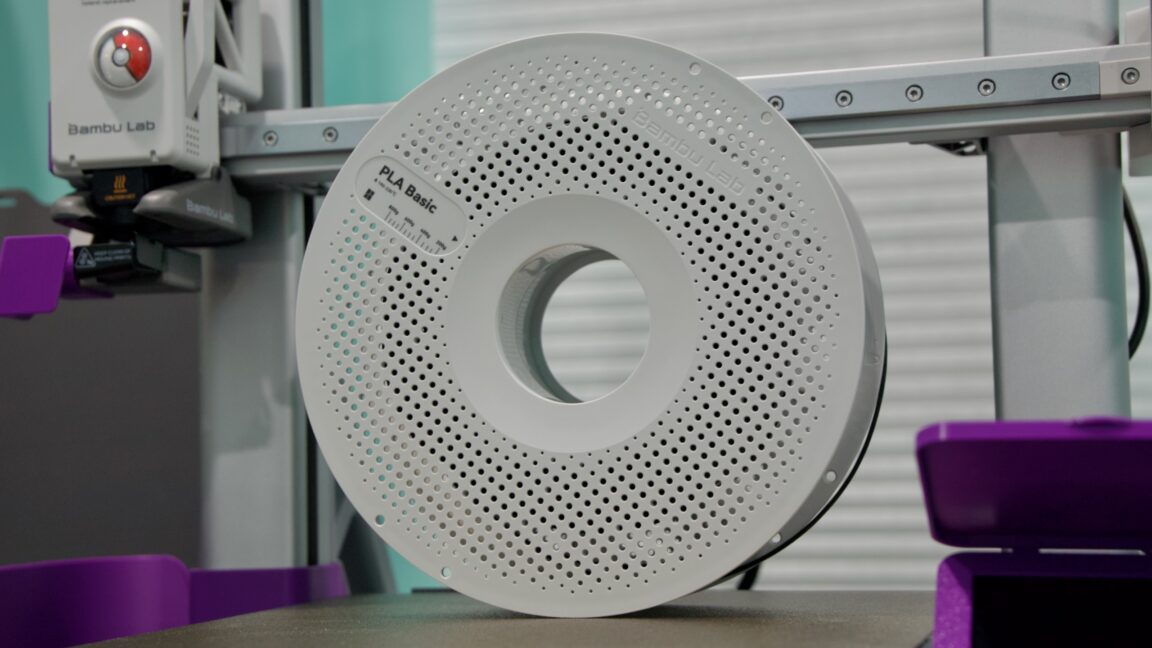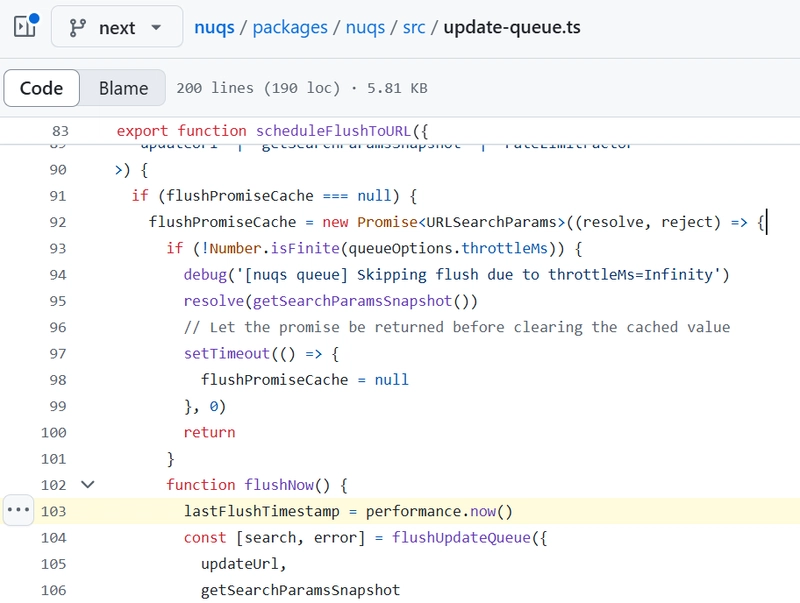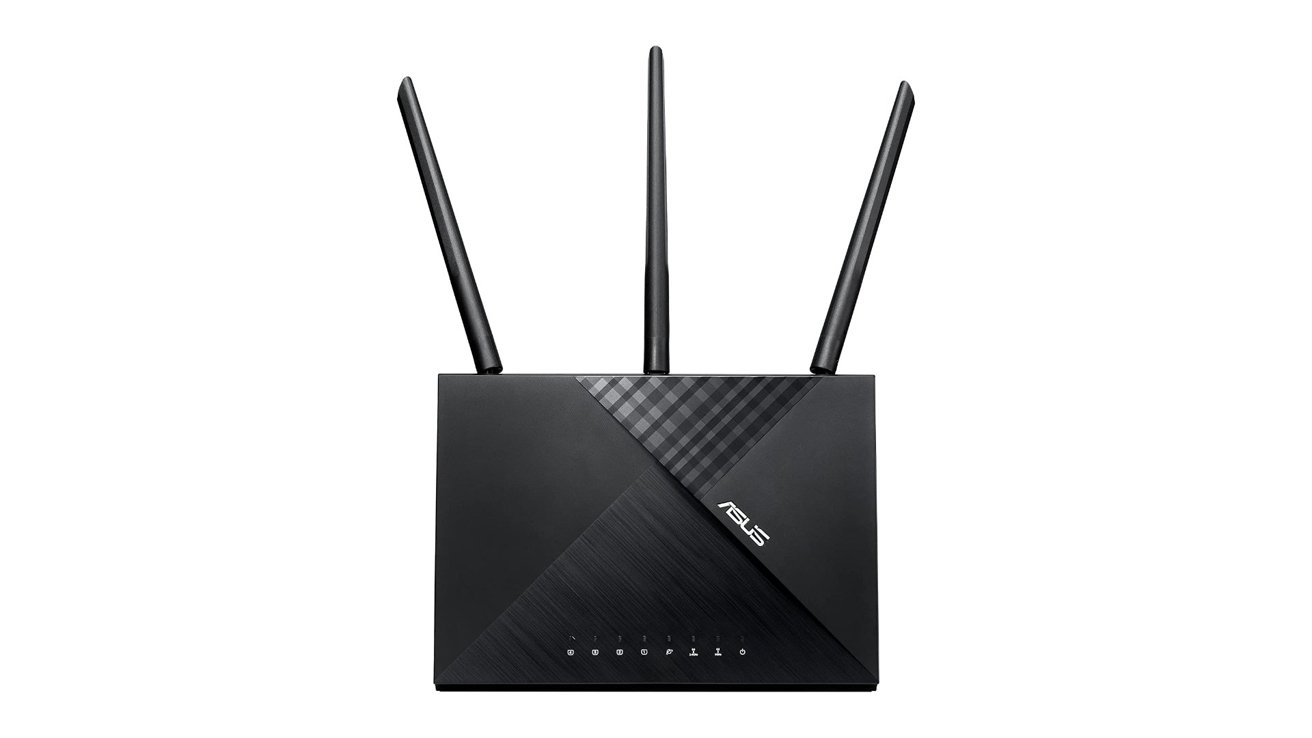This giant microwave may change the future of war
Imagine: China deploys hundreds of thousands of autonomous drones in the air, on the sea, and under the water—all armed with explosive warheads or small missiles. These machines descend in a swarm toward military installations on Taiwan and nearby US bases, and over the course of a few hours, a single robotic blitzkrieg overwhelms the US…

Imagine: China deploys hundreds of thousands of autonomous drones in the air, on the sea, and under the water—all armed with explosive warheads or small missiles. These machines descend in a swarm toward military installations on Taiwan and nearby US bases, and over the course of a few hours, a single robotic blitzkrieg overwhelms the US Pacific force before it can even begin to fight back.
Maybe it sounds like a new Michael Bay movie, but it’s the scenario that keeps the chief technology officer of the US Army up at night.
“I’m hesitant to say it out loud so I don’t manifest it,” says Alex Miller, a longtime Army intelligence officer who became the CTO to the Army’s chief of staff in 2023.
Even if World War III doesn’t break out in the South China Sea, every US military installation around the world is vulnerable to the same tactics—as are the militaries of every other country around the world. The proliferation of cheap drones means just about any group with the wherewithal to assemble and launch a swarm could wreak havoc, no expensive jets or massive missile installations required.
While the US has precision missiles that can shoot these drones down, they don’t always succeed: A drone attack killed three US soldiers and injured dozens more at a base in the Jordanian desert last year. And each American missile costs orders of magnitude more than its targets, which limits their supply; countering thousand-dollar drones with missiles that cost hundreds of thousands, or even millions, of dollars per shot can only work for so long, even with a defense budget that could reach a trillion dollars next year.
The US armed forces are now hunting for a solution—and they want it fast. Every branch of the service and a host of defense tech startups are testing out new weapons that promise to disable drones en masse. There are drones that slam into other drones like battering rams; drones that shoot out nets to ensnare quadcopter propellers; precision-guided Gatling guns that simply shoot drones out of the sky; electronic approaches, like GPS jammers and direct hacking tools; and lasers that melt holes clear through a target’s side.
Then there are the microwaves: high-powered electronic devices that push out kilowatts of power to zap the circuits of a drone as if it were the tinfoil you forgot to take off your leftovers when you heated them up.
That’s where Epirus comes in.
When I went to visit the HQ of this 185-person startup in Torrance, California, earlier this year, I got a behind-the-scenes look at its massive microwave, called Leonidas, which the US Army is already betting on as a cutting-edge anti-drone weapon. The Army awarded Epirus a $66 million contract in early 2023, topped that up with another $17 million last fall, and is currently deploying a handful of the systems for testing with US troops in the Middle East and the Pacific. (The Army won’t get into specifics on the location of the weapons in the Middle East but published a report of a live-fire test in the Philippines in early May.)
Up close, the Leonidas that Epirus built for the Army looks like a two-foot-thick slab of metal the size of a garage door stuck on a swivel mount. Pop the back cover, and you can see that the slab is filled with dozens of individual microwave amplifier units in a grid. Each is about the size of a safe-deposit box and built around a chip made of gallium nitride, a semiconductor that can survive much higher voltages and temperatures than the typical silicon.
Leonidas sits on top of a trailer that a standard-issue Army truck can tow, and when it is powered on, the company’s software tells the grid of amps and antennas to shape the electromagnetic waves they’re blasting out with a phased array, precisely overlapping the microwave signals to mold the energy into a focused beam. Instead of needing to physically point a gun or parabolic dish at each of a thousand incoming drones, the Leonidas can flick between them at the speed of software.

Of course, this isn’t magic—there are practical limits on how much damage one array can do, and at what range—but the total effect could be described as an electromagnetic pulse emitter, a death ray for electronics, or a force field that could set up a protective barrier around military installations and drop drones the way a bug zapper fizzles a mob of mosquitoes.
I walked through the nonclassified sections of the Leonidas factory floor, where a cluster of engineers working on weaponeering—the military term for figuring out exactly how much of a weapon, be it high explosive or microwave beam, is necessary to achieve a desired effect—ran tests in a warren of smaller anechoic rooms. Inside, they shot individual microwave units at a broad range of commercial and military drones, cycling through waveforms and power levels to try to find the signal that could fry each one with maximum efficiency.
On a live video feed from inside one of these foam-padded rooms, I watched a quadcopter drone spin its propellers and then, once the microwave emitter turned on, instantly stop short—first the propeller on the front left and then the rest. A drone hit with a Leonidas beam doesn’t explode—it just falls.
Compared with the blast of a missile or the sizzle of a laser, it doesn’t look like much. But it could force enemies to come up with costlier ways of attacking that reduce the advantage of the drone swarm, and it could get around the inherent limitations of purely electronic or strictly physical defense systems. It could save lives.
Epirus CEO Andy Lowery, a tall guy with sparkplug energy and a rapid-fire southern Illinois twang, doesn’t shy away from talking big about his product. As he told me during my visit, Leonidas is intended to lead a last stand, like the Spartan from whom the microwave takes its name—in this case, against hordes of unmanned aerial vehicles, or UAVs. While the actual range of the Leonidas system is kept secret, Lowery says the Army is looking for a solution that can reliably stop drones within a few kilometers. He told me, “They would like our system to be the owner of that final layer—to get any squeakers, any leakers, anything like that.”
Now that they’ve told the world they “invented a force field,” Lowery added, the focus is on manufacturing at scale—before the drone swarms really start to descend or a nation with a major military decides to launch a new war. Before, in other words, Miller’s nightmare scenario becomes reality.
Why zap?
Miller remembers well when the danger of small weaponized drones first appeared on his radar. Reports of Islamic State fighters strapping grenades to the bottom of commercial DJI Phantom quadcopters first emerged in late 2016 during the Battle of Mosul. “I went, ‘Oh, this is going to be bad,’ because basically it’s an airborne IED at that point,” he says.
He’s tracked the danger as it’s built steadily since then, with advances in machine vision, AI coordination software, and suicide drone tactics only accelerating.
Then the war in Ukraine showed the world that cheap technology has fundamentally changed how warfare happens. We have watched in high-definition video how a cheap, off-the-shelf drone modified to carry a small bomb can be piloted directly into a faraway truck, tank, or group of troops to devastating effect. And larger suicide drones, also known as “loitering munitions,” can be produced for just tens of thousands of dollars and launched in massive salvos to hit soft targets or overwhelm more advanced military defenses through sheer numbers.
As a result, Miller, along with large swaths of the Pentagon and DC policy circles, believes that the current US arsenal for defending against these weapons is just too expensive and the tools in too short supply to truly match the threat.
Just look at Yemen, a poor country where the Houthi military group has been under constant attack for the past decade. Armed with this new low-tech arsenal, in the past 18 months the rebel group has been able to bomb cargo ships and effectively disrupt global shipping in the Red Sea—part of an effort to apply pressure on Israel to stop its war in Gaza. The Houthis have also used missiles, suicide drones, and even drone boats to launch powerful attacks on US Navy ships sent to stop them.
The most successful defense tech firm selling anti-drone weapons to the US military right now is Anduril, the company started by Palmer Luckey, the inventor of the Oculus VR headset, and a crew of cofounders from Oculus and defense data giant Palantir. In just the past few months, the Marines have chosen Anduril for counter-drone contracts that could be worth nearly $850 million over the next decade, and the company has been working with Special Operations Command since 2022 on a counter-drone contract that could be worth nearly a billion dollars over a similar time frame. It’s unclear from the contracts what, exactly, Anduril is selling to each organization, but its weapons include electronic warfare jammers, jet-powered drone bombs, and propeller-driven Anvil drones designed to simply smash into enemy drones.
In this arsenal, the cheapest way to stop a swarm of drones is electronic warfare: jamming the GPS or radio signals used to pilot the machines. But the intense drone battles in Ukraine have advanced the art of jamming and counter-jamming close to the point of stalemate. As a result, a new state of the art is emerging: unjammable drones that operate autonomously by using onboard processors to navigate via internal maps and computer vision, or even drones connected with 20-kilometer-long filaments of fiber-optic cable for tethered control.
But unjammable doesn’t mean unzappable. Instead of using the scrambling method of a jammer, which employs an antenna to block the drone’s connection to a pilot or remote guidance system, the Leonidas microwave beam hits a drone body broadside. The energy finds its way into something electrical, whether the central flight controller or a tiny wire controlling a flap on a wing, to short-circuit whatever’s available. (The company also says that this targeted hit of energy allows birds and other wildlife to continue to move safely.)
Tyler Miller, a senior systems engineer on Epirus’s weaponeering team, told me that they never know exactly which part of the target drone is going to go down first, but they’ve reliably seen the microwave signal get in somewhere to overload a circuit. “Based on the geometry and the way the wires are laid out,” he said, one of those wires is going to be the best path in. “Sometimes if we rotate the drone 90 degrees, you have a different motor go down first,” he added.
The team has even tried wrapping target drones in copper tape, which would theoretically provide shielding, only to find that the microwave still finds a way in through moving propeller shafts or antennas that need to remain exposed for the drone to fly.
Leonidas also has an edge when it comes to downing a mass of drones at once. Physically hitting a drone out of the sky or lighting it up with a laser can be effective in situations where electronic warfare fails, but anti-drone drones can only take out one at a time, and lasers need to precisely aim and shoot. Epirus’s microwaves can damage everything in a roughly 60-degree arc from the Leonidas emitter simultaneously and keep on zapping and zapping; directed energy systems like this one never run out of ammo.
As for cost, each Army Leonidas unit currently runs in the “low eight figures,” Lowery told me. Defense contract pricing can be opaque, but Epirus delivered four units for its $66 million initial contract, giving a back-of-napkin price around $16.5 million each. For comparison, Stinger missiles from Raytheon, which soldiers shoot at enemy aircraft or drones from a shoulder-mounted launcher, cost hundreds of thousands of dollars a pop, meaning the Leonidas could start costing less (and keep shooting) after it downs the first wave of a swarm.
Raytheon’s radar, reversed
Epirus is part of a new wave of venture-capital-backed defense companies trying to change the way weapons are created—and the way the Pentagon buys them. The largest defense companies, firms like Raytheon, Boeing, Northrop Grumman, and Lockheed Martin, typically develop new weapons in response to research grants and cost-plus contracts, in which the US Department of Defense guarantees a certain profit margin to firms building products that match their laundry list of technical specifications. These programs have kept the military supplied with cutting-edge weapons for decades, but the results may be exquisite pieces of military machinery delivered years late and billions of dollars over budget.
Rather than building to minutely detailed specs, the new crop of military contractors aim to produce products on a quick time frame to solve a problem and then fine-tune them as they pitch to the military. The model, pioneered by Palantir and SpaceX, has since propelled companies like Anduril, Shield AI, and dozens of other smaller startups into the business of war as venture capital piles tens of billions of dollars into defense.
Like Anduril, Epirus has direct Palantir roots; it was cofounded by Joe Lonsdale, who also cofounded Palantir, and John Tenet, Lonsdale’s colleague at the time at his venture fund, 8VC. (Tenet, the son of former CIA director George Tenet, may have inspired the company’s name—the elder Tenet’s parents were born in the Epirus region in the northwest of Greece. But the company more often says it’s a reference to the pseudo-mythological Epirus Bow from the 2011 fantasy action movie Immortals, which never runs out of arrows.)
While Epirus is doing business in the new mode, its roots are in the old—specifically in Raytheon, a pioneer in the field of microwave technology. Cofounded by MIT professor Vannevar Bush in 1922, it manufactured vacuum tubes, like those found in old radios. But the company became synonymous with electronic defense during World War II, when Bush spun up a lab to develop early microwave radar technology invented by the British into a workable product, and Raytheon then began mass-producing microwave tubes—known as magnetrons—for the US war effort. By the end of the war in 1945, Raytheon was making 80% of the magnetrons powering Allied radar across the world.

Large tubes remained the best way to emit high-power microwaves for more than half a century, handily outperforming silicon-based solid-state amplifiers. They’re still around—the microwave on your kitchen counter runs on a vacuum tube magnetron. But tubes have downsides: They’re hot, they’re big, and they require upkeep. (In fact, the other microwave drone zapper currently in the Pentagon pipeline, the Tactical High-power Operational Responder, or THOR, still relies on a physical vacuum tube. It’s reported to be effective at downing drones in tests but takes up a whole shipping container and needs a dish antenna to zap its targets.)
By the 2000s, new methods of building solid-state amplifiers out of materials like gallium nitride started to mature and were able to handle more power than silicon without melting or shorting out. The US Navy spent hundreds of millions of dollars on cutting-edge microwave contracts, one for a project at Raytheon called Next Generation Jammer—geared specifically toward designing a new way to make high-powered microwaves that work at extremely long distances.
Lowery, the Epirus CEO, began his career working on nuclear reactors on Navy aircraft carriers before he became the chief engineer for Next Generation Jammer at Raytheon in 2010. There, he and his team worked on a system that relied on many of the same fundamentals that now power the Leonidas—using the same type of amplifier material and antenna setup to fry the electronics of a small target at much closer range rather than disrupting the radar of a target hundreds of miles away.
The similarity is not a coincidence: Two engineers from Next Generation Jammer helped launch Epirus in 2018. Lowery—who by then was working at the augmented-reality startup RealWear, which makes industrial smart glasses—joined Epirus in 2021 to run product development and was asked to take the top spot as CEO in 2023, as Leonidas became a fully formed machine. Much of the founding team has since departed for other projects, but Raytheon still runs through the company’s collective CV: ex-Raytheon radar engineer Matt Markel started in January as the new CTO, and Epirus’s chief engineer for defense, its VP of engineering, its VP of operations, and a number of employees all have Raytheon roots as well.
Markel tells me that the Epirus way of working wouldn’t have flown at one of the big defense contractors: “They never would have tried spinning off the technology into a new application without a contract lined up.” The Epirus engineers saw the use case, raised money to start building Leonidas, and already had prototypes in the works before any military branch started awarding money to work on the project.
Waiting for the starting gun
On the wall of Lowery’s office are two mementos from testing days at an Army proving ground: a trophy wing from a larger drone, signed by the whole testing team, and a framed photo documenting the Leonidas’s carnage—a stack of dozens of inoperative drones piled up in a heap.
Despite what seems to have been an impressive test show, it’s still impossible from the outside to determine whether Epirus’s tech is ready to fully deliver if the swarms descend.
The Army would not comment specifically on the efficacy of any new weapons in testing or early deployment, including the Leonidas system. A spokesperson for the Army’s Rapid Capabilities and Critical Technologies Office, or RCCTO, which is the subsection responsible for contracting with Epirus to date, would only say in a statement that it is “committed to developing and fielding innovative Directed Energy solutions to address evolving threats.”
But various high-ranking officers appear to be giving Epirus a public vote of confidence. The three-star general who runs RCCTO and oversaw the Leonidas testing last summer told Breaking Defense that “the system actually worked very well,” even if there was work to be done on “how the weapon system fits into the larger kill chain.”
And when former secretary of the Army Christine Wormuth, then the service’s highest-ranking civilian, gave a parting interview this past January, she mentioned Epirus in all but name, citing “one company” that is “using high-powered microwaves to basically be able to kill swarms of drones.” She called that kind of capability “critical for the Army.”
The Army isn’t the only branch interested in the microwave weapon. On Epirus’s factory floor when I visited, alongside the big beige Leonidases commissioned by the Army, engineers were building a smaller expeditionary version for the Marines, painted green, which it delivered in late April. Videos show that when it put some of its microwave emitters on a dock and tested them out for the Navy last summer, the microwaves left their targets dead in the water—successfully frying the circuits of outboard motors like the ones propelling Houthi drone boats.
Epirus is also currently working on an even smaller version of the Leonidas that can mount on top of the Army’s Stryker combat vehicles, and it’s testing out attaching a single microwave unit to a small airborne drone, which could work as a highly focused zapper to disable cars, data centers, or single enemy drones.

While neither the Army nor the Navy has yet to announce a contract to start buying Epirus’s systems at scale, the company and its investors are actively preparing for the big orders to start rolling in. It raised $250 million in a funding round in early March to get ready to make as many Leonidases as possible in the coming years, adding to the more than $300 million it’s raised since opening its doors in 2018.
“If you invent a force field that works,” Lowery boasts, “you really get a lot of attention.”
The task for Epirus now, assuming that its main customers pull the trigger and start buying more Leonidases, is ramping up production while advancing the tech in its systems. Then there are the more prosaic problems of staffing, assembly, and testing at scale. For future generations, Lowery told me, the goal is refining the antenna design and integrating higher-powered microwave amplifiers to push the output into the tens of kilowatts, allowing for increased range and efficacy.
While this could be made harder by Trump’s global trade war, Lowery says he’s not worried about their supply chain; while China produces 98% of the world’s gallium, according to the US Geological Survey, and has choked off exports to the US, Epirus’s chip supplier uses recycled gallium from Japan.
The other outside challenge may be that Epirus isn’t the only company building a drone zapper. One of China’s state-owned defense companies has been working on its own anti-drone high-powered microwave weapon called the Hurricane, which it displayed at a major military show in late 2024.
It may be a sign that anti-electronics force fields will become common among the world’s militaries—and if so, the future of war is unlikely to go back to the status quo ante, and it might zag in a different direction yet again. But military planners believe it’s crucial for the US not to be left behind. So if it works as promised, Epirus could very well change the way that war will play out in the coming decade.
While Miller, the Army CTO, can’t speak directly to Epirus or any specific system, he will say that he believes anti-drone measures are going to have to become ubiquitous for US soldiers. “Counter-UAS [Unmanned Aircraft System] unfortunately is going to be like counter-IED,” he says. “It’s going to be every soldier’s job to think about UAS threats the same way it was to think about IEDs.”
And, he adds, it’s his job and his colleagues’ to make sure that tech so effective it works like “almost magic” is in the hands of the average rifleman. To that end, Lowery told me, Epirus is designing the Leonidas control system to work simply for troops, allowing them to identify a cluster of targets and start zapping with just a click of a button—but only extensive use in the field can prove that out.

In the not-too-distant future, Lowery says, this could mean setting up along the US-Mexico border. But the grandest vision for Epirus’s tech that he says he’s heard is for a city-scale Leonidas along the lines of a ballistic missile defense radar system called PAVE PAWS, which takes up an entire 105-foot-tall building and can detect distant nuclear missile launches. The US set up four in the 1980s, and Taiwan currently has one up on a mountain south of Taipei. Fill a similar-size building full of microwave emitters, and the beam could reach out “10 or 15 miles,” Lowery told me, with one sitting sentinel over Taipei in the north and another over Kaohsiung in the south of Taiwan.
Riffing in Greek mythological mode, Lowery said of drones, “I call all these mischief makers. Whether they’re doing drugs or guns across the border or they’re flying over Langley [or] they’re spying on F-35s, they’re all like Icarus. You remember Icarus, with his wax wings? Flying all around—‘Nobody’s going to touch me, nobody’s going to ever hurt me.’”
“We built one hell of a wax-wing melter.”
Sam Dean is a reporter focusing on business, tech, and defense. He is writing a book about the recent history of Silicon Valley returning to work with the Pentagon for Viking Press and covering the defense tech industry for a number of publications. Previously, he was a business reporter at the Los Angeles Times.














































































































































































![[The AI Show Episode 150]: AI Answers: AI Roadmaps, Which Tools to Use, Making the Case for AI, Training, and Building GPTs](https://www.marketingaiinstitute.com/hubfs/ep%20150%20cover.png)
![[The AI Show Episode 149]: Google I/O, Claude 4, White Collar Jobs Automated in 5 Years, Jony Ive Joins OpenAI, and AI’s Impact on the Environment](https://www.marketingaiinstitute.com/hubfs/ep%20149%20cover.png)




























































































































![[DEALS] Mail Backup X Individual Edition: Lifetime Subscription (72% off) & Other Deals Up To 98% Off – Offers End Soon!](https://www.javacodegeeks.com/wp-content/uploads/2012/12/jcg-logo.jpg)







































































































































































































































![This app turns your Apple Watch into a Game Boy [Hands-on]](https://i0.wp.com/9to5mac.com/wp-content/uploads/sites/6/2025/05/FI-Arc-emulator.jpg.jpg?resize=1200%2C628&quality=82&strip=all&ssl=1)
![Google TV is finally preparing sleep timer support as app readies Material 3 Expressive [Gallery]](https://i0.wp.com/9to5google.com/wp-content/uploads/sites/4/2024/01/google-tv-logo.jpg?resize=1200%2C628&quality=82&strip=all&ssl=1)














![Apple Shares Official Trailer for 'Smoke' Starring Taron Egerton [Video]](https://www.iclarified.com/images/news/97453/97453/97453-640.jpg)
![Apple's M4 Mac Mini Drops to $488.63, New Lowest Price Ever [Deal]](https://www.iclarified.com/images/news/97456/97456/97456-1280.jpg)

![iPhone 16 Becomes World's Best-Selling Smartphone in Q1 2025 [Chart]](https://www.iclarified.com/images/news/97448/97448/97448-640.jpg)







































































